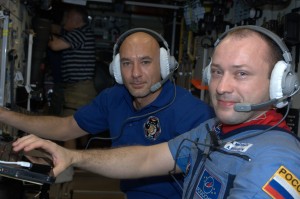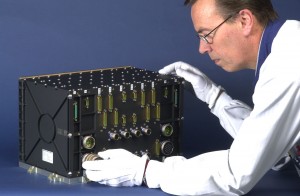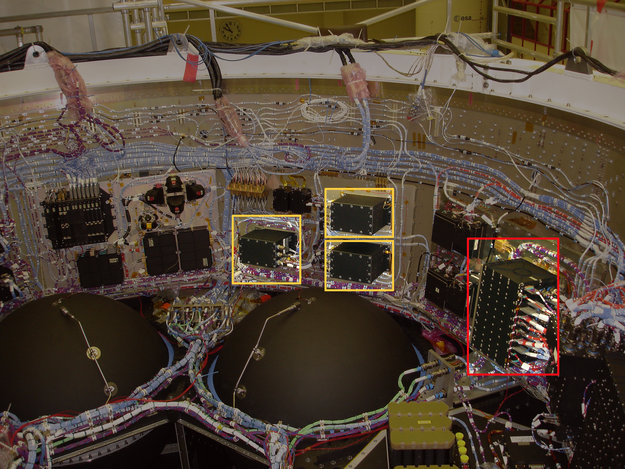We are nearing the end of our blog posts on country contribution to ATV hardware as we feature the last European country in the series. Sweden supplied but one unit, but it is arguably one of the most important – even if it is never used. The Monitoring and Safing Unit built by Ruag space in Sweden is responsible for keeping the International Space Station and its astronauts safe during ATV’s automatic docking.
The Unit keeps track of all parameters such as ATV’s speed, distance to target, angle of approach and so on and will abort a docking and park the space freighter at a safe distance from the Space Station if it considers anything amiss. As you can imagine, the Monitoring and Safing Unit is one of the most reliable computers in the world, the consequences of this computer crashing could result in a real-life crash, so no margins for error are tolerated.
Of course the Monitoring and Safing Unit should never need to kick in to begin with, it will only act if the already very robust and grammatically better named Fault Tolerant Computer fails. Running completely independently from the Fault Tolerant Computer, the Monitoring and Safing Unit is always looking over its cousin’s virtual shoulder – ready to apply the brakes if necessary.
If the Unit decides that action is necessary it will command ATV to perform a Collision Avoidance Manoeuvre and head towards the Sun. An easy target to aim for but importantly, heading towards the Sun will ensure maximum power is generated from ATVs solar panels as they get the full blast of the Sun’s rays.
The Unit is made of two identical computers, a master and slave. Much like the Monitoring and Safing Unit monitors the Fault Tolerant Computer (which itself is also made of three computers), the Unit’s slave monitors its master, ready to take over in case the master should fail, the last backup to the backup to the backup to the backup to the backup.

Human backup: ESA astronaut Luca Parmitano and cosmonaut Aleksander Misurkin monitor ATV-4 docking. Credit: ESA/NASA
Computers are all well and good, but the Unit can also be activated by human intervention, either from the ATV Control Centre in Toulouse, France, or by an astronaut on the Space Station.
Ruag space in Sweden has a long history of supplying ultra-reliable computers for ESA projects including the Ariane launchers, Planck and Gaia. Ruag’s other contributions to ATV were discussed in more detail in the ATV: made in Switzerland post.
For detailed information on the Monitoring and Safing Unit head over to this archive article on the ESA website that includes more funky 16-bit animations.



 Automated Transfer Vehicle page
Automated Transfer Vehicle page ATV blog archive
ATV blog archive
 NASA Orion page
NASA Orion page NASA Artemis
NASA Artemis Airbus Orion page
Airbus Orion page
Discussion: no comments